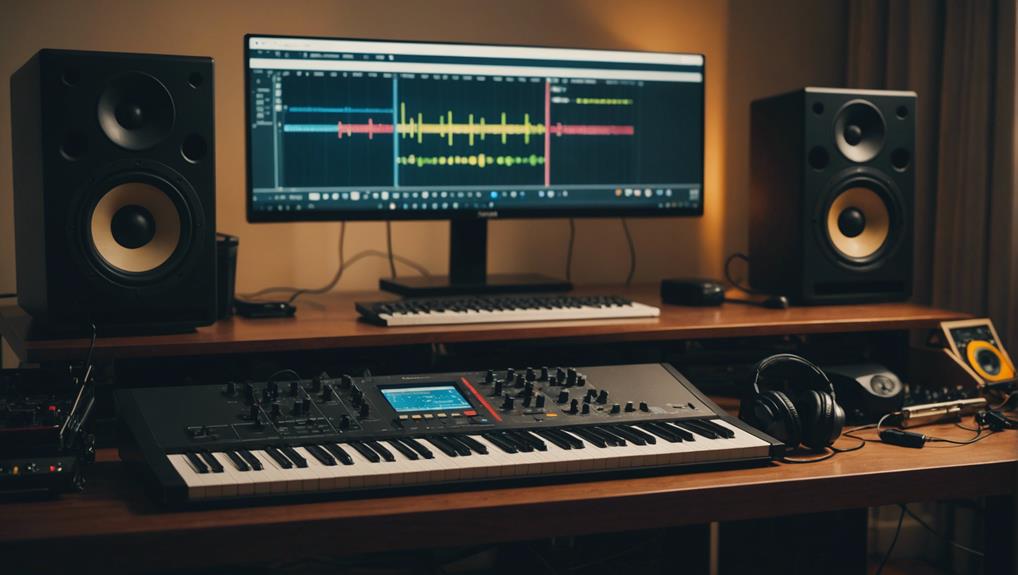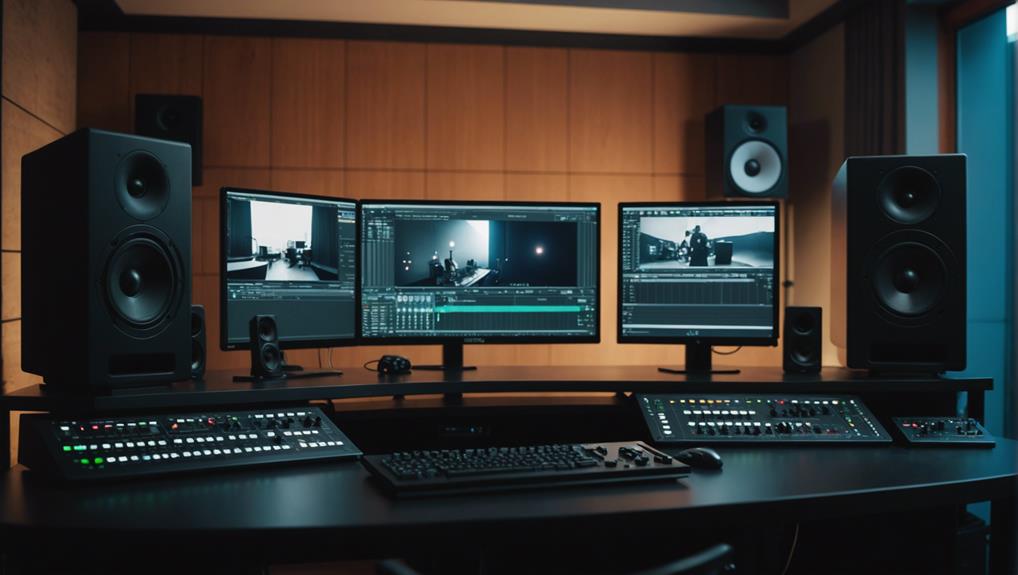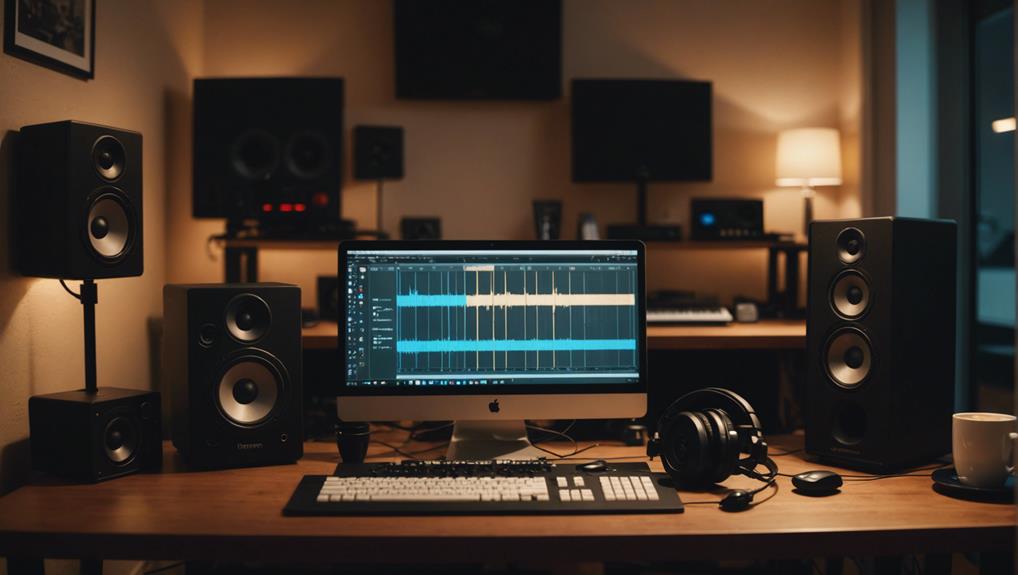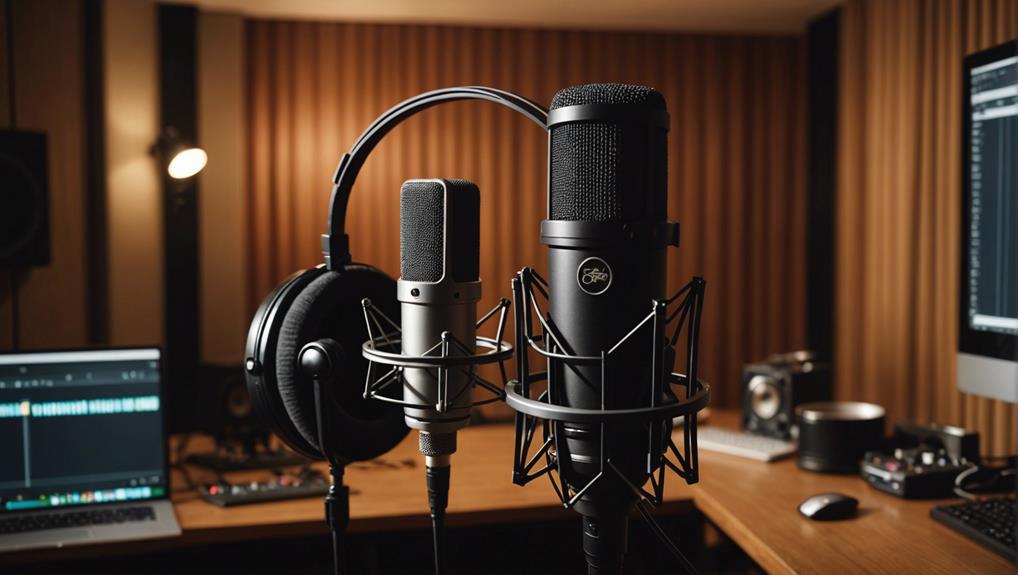When you’re starting out in music production, sound selection can make or break your tracks. First, you need to determine the vibe you want to convey, as this will guide your choices. From there, picking a main sound to build around is essential. Experimenting with variations through pitch and effects can add depth, while layering percussive elements and background textures can enrich the overall composition. But how do you effectively use VST banks and get inspired by others without losing your unique touch? Let’s explore how you can master these techniques to elevate your music.
TL-DR
- Identify the vibe and atmosphere you want for your beat.
- Choose a main sound that sets the foundation and tone.
- Experiment with pitch, filters, and effects for unique variations.
- Layer sounds to create a fuller, richer composition.
- Use VST banks to access a diverse range of professional sounds.
Determine Your Desired Vibe
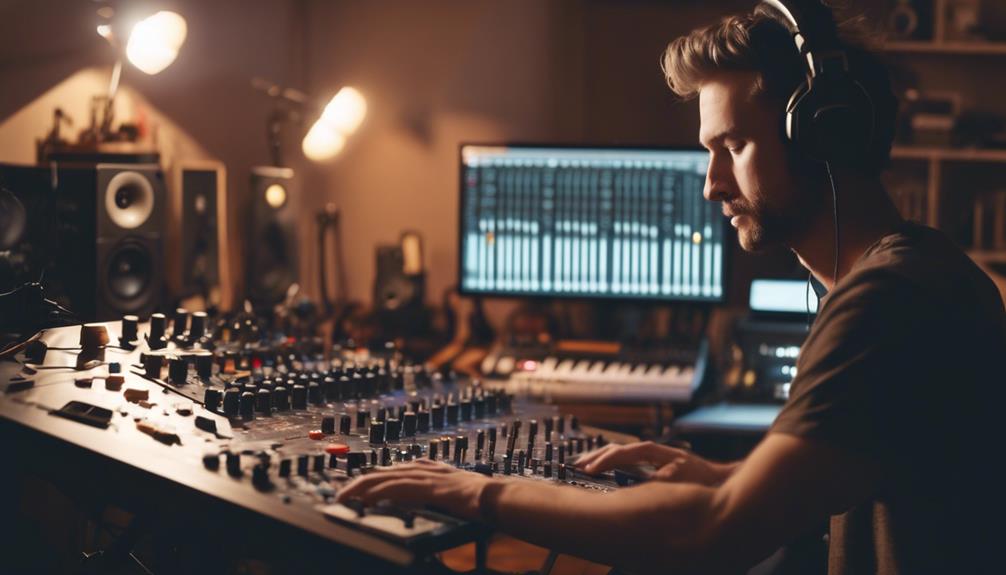
When selecting sounds for your beat, you’ll first want to determine the vibe you’re going for. Whether you’re aiming to create a sad, futuristic, ambient, or another style of new song, identifying the mood is your initial step. The mood you choose will guide your sound selection process and help you convey the intended emotion or atmosphere effectively.
Start by envisioning the overall feel you want your beat to have. Do you want it to sound melancholic or uplifting? Maybe you’re going for something that feels out-of-this-world or deeply immersive. Once you have a clear picture of the vibe, you can begin experimenting with different sounds to find one that aligns with your vision.
For instance, if you’re aiming for a sad vibe, you might consider using a dark piano sound. On the other hand, a futuristic track might benefit from a unique synth. Don’t hesitate to play around with various options until you find the sound that truly captures the desired atmosphere.
Choose a Main Sound
To start, identify the main sound that aligns perfectly with the vibe you’ve envisioned for your track. Your main sound sets the tone for the entire piece, so it’s important to choose one that captures the desired atmosphere or emotion.
Whether you’re going for a sad, futuristic, or ambient vibe, the main sound will be your foundation.
Consider these options based on your track’s mood:
- Sad beat: Start with a dark piano sound. It adds depth and melancholic tones.
- Futuristic vibe: Opt for a unique synth. It brings an otherworldly feel to your track.
- Ambient beat: Use a pad sound. It creates a lush, immersive background.
Don’t hesitate to create your own sounds if you can’t find the perfect match. Adjust chords and notes until they fit the style you’re aiming for.
This main sound will be central to your overall sound, so take your time to experiment with different sounds and textures.
Experiment With Variations

Experimenting with variations can elevate your track by adding depth and keeping the listener engaged. When you’re selecting a sound to choose, don’t just stick to the default settings. Try changing the pitch, filters, or effects on a sound to create unique variations. For instance, altering the pitch can make a sound feel brighter or darker, while tweaking filters can change its character entirely.
Moreover, don’t hesitate to experiment with different sound combinations. You might discover surprising and interesting results by blending sounds you wouldn’t normally pair together. This process can reveal new textures and layers that enrich your track.
Automation is another powerful tool to employ. By modulating parameters over time, you can introduce dynamic variations that keep your sound evolving and engaging. Think about automating filter sweeps, reverb levels, or even panning to add movement and interest.
Lastly, push the boundaries by exploring unconventional sound choices. Sometimes, the most unexpected sounds can become the signature element of your track. Remember, the goal is to make your music stand out, so don’t shy away from bold experimentation.
Layer Additional Sounds
Layering additional sounds can greatly enhance the depth and complexity of your track. By adding various layers, you can create a richer and more dynamic composition. When you layer additional sounds, it’s important to consider how these sounds together will interact to fill out the frequency spectrum and create a fuller sound.
Consider these useful tips for layering:
- Percussive Elements: Add shakers or hi-hats to introduce rhythmic variation.
- Instrument Sounds: Experiment with different instruments to bring depth to your composition.
- Background Textures: Subtle atmospheric sounds can greatly enhance the mood of your beat.
- Frequency Spectrum: Use layering to make sure no part of the frequency range feels empty.
Start by layering percussive elements like shakers or hi-hats. They can add a new rhythmic dimension to your beat.
Next, experiment with different instrument sounds. Maybe a piano layered with a soft synth pad can create a more immersive experience.
Don’t forget to add subtle background textures or atmospheric sounds. These can make your track feel more alive and emotionally engaging.
When you bring these sounds together, you’ll notice how they complement each other, filling out the frequency spectrum and giving your track a fuller, richer sound.
Use VST Banks
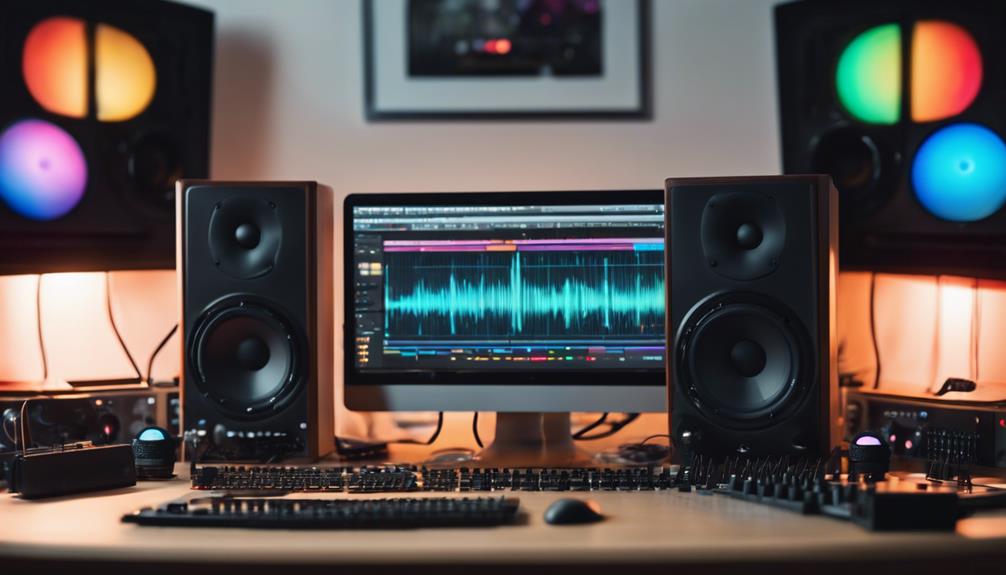
VST Banks offer a treasure trove of virtual instruments and sounds that can enhance your music production instantly. They provide an extensive collection of high-quality sounds ranging from synths and pianos to drums and effects. As a beginner, diving into VST Banks can be a game-changer. You’ll have a broad array of new sounds at your fingertips, allowing you to experiment and find that perfect sound that’s been elusive.
Organizing your sounds into Banks can streamline the selection process, saving you valuable time. By categorizing them based on type, genre, or mood, you can quickly locate the sounds you need without getting bogged down. This method not only boosts your workflow efficiency but also keeps your creative momentum flowing.
Using VST Banks also means you’re starting with professional-sounding elements right from the get-go. The high-quality sounds available can give your tracks a polished and sophisticated feel, even if you’re just starting out.
Don’t hesitate to explore different Banks to find the ones that resonate with your style. This way, you make sure that every sound you select elevates your production to the next level.
Apply Pre-Effects
Applying pre-effects can greatly enhance and refine your sounds before they become integral parts of your composition. When you’re selecting sounds to choose for your project, applying the right pre-effects can make a world of difference.
One fundamental pre-effect is EQ, which allows you to shape the tone of your instruments by adjusting frequencies. For instance, cutting high frequencies can create a darker, moodier sound, while reducing low frequencies can increase clarity in your mix.
Here are some pre-effects you should consider:
- EQ: Adjusts frequencies to shape your sound’s tone and resolve clashes.
- Reverb: Softens harsh tones and adds depth.
- Distortion: Makes sounds stand out in the mix.
- Compression: Controls dynamics and evens out volume levels.
Using EQ as a pre-effect, you can resolve frequency clashes between different sounds. This is essential when layering multiple instruments, ensuring each has its own space in the mix.
Reverb can soften harsh tones, making your sounds more pleasant to the ear. Distortion can add grit and make specific sounds pop.
Get Inspired by Others
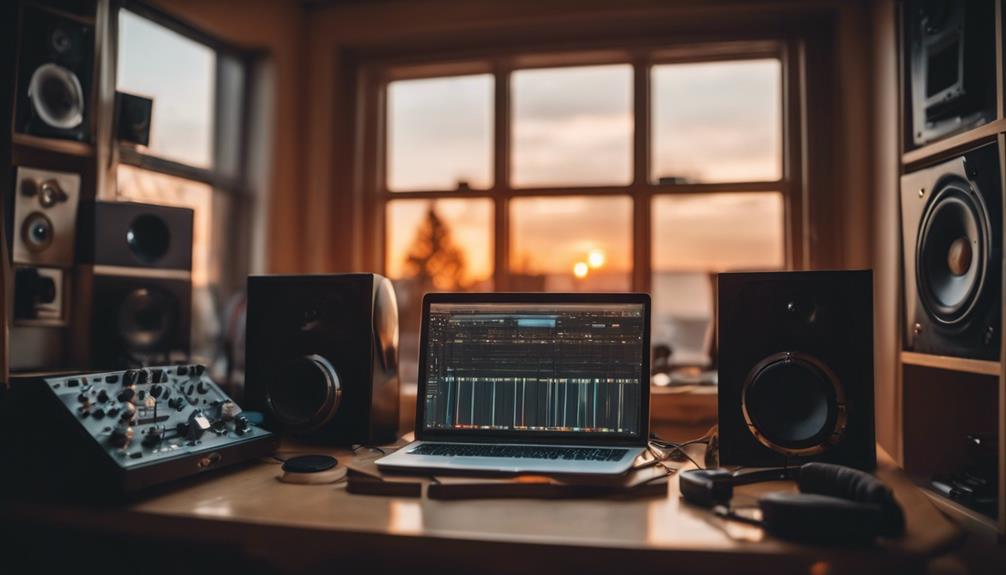
When you’re looking to improve your sound selection, start by exploring popular music genres and analyzing successful soundtracks.
Pay attention to the iconic instrumental choices that define these tracks.
Explore Popular Music Genres
Explore the world of popular music genres to uncover how successful artists choose and layer their sounds. By diving into different genres, you’ll gain insights into the sound selection process that can elevate your own music.
Start by paying attention to the instruments, synths, and effects used in various genres. Analyze popular tracks to see how these elements come together, and you’ll soon notice patterns and preferences in sound selection.
To get started, consider these steps:
- Study genre-specific sound packs: These resources offer a curated collection of sounds typical for genres like hip-hop, pop, or EDM.
- Recreate sounds from popular songs: This hands-on approach helps you understand the essence of genre-specific sound selection.
- Experiment with different arrangements: Notice how successful tracks layer their sounds, and try to replicate it in your own projects.
- Expand your sound palette: Listen to a variety of genres, and incorporate elements from each to create a unique blend.
Analyze Successful Soundtracks
Now that you’ve explored various music genres, let’s analyze successful soundtracks to uncover how different elements contribute to their engaging compositions. By examining the sound selection in popular tracks, you can gain valuable insights for your own music production.
Start by identifying the key sounds that make these soundtracks stand out. Notice how certain instruments and effects are layered to create a cohesive and dynamic piece.
Pay attention to the arrangement of sounds. Successful soundtracks often use a blend of different elements to evoke specific emotions and create impactful moments. By studying these arrangements, you’ll learn how to craft music that captures your listeners’ attention.
Focus on how different instruments interact with each other. This interplay can add depth and texture to a track, making it more engaging. Listen for subtle details, like background effects or secondary melodies, that contribute to the overall feel of the soundtrack.
Analyzing successful soundtracks won’t only inspire you but also teach you the importance of thoughtful sound selection. By emulating these techniques, you can enhance your music production skills and create compelling compositions that resonate with your audience.
Study Iconic Instrumental Choices
Curious about what makes certain instrumentals unforgettable? Analyzing iconic instrument choices in popular songs is a great way to understand how sounds contribute to the overall composition.
Start by identifying key elements that stand out in well-known tracks. Whether it’s the ethereal quality of synths, the emotional depth of pianos, or the richness of strings, there’s always something to learn.
When you study how artists blend different sounds, you’ll discover unique and memorable instrumentals. For instance, look at how artists use:
- Synths to add a modern, electronic feel.
- Pianos for a timeless, emotional touch.
- Strings to create a lush, orchestral layer.
- Drums to drive the rhythm and energy.
Pay attention to the placement and timing of these instruments. Notice how they enhance the emotional impact of the music.
Next up, learn all about sound design in music production in this guide.
